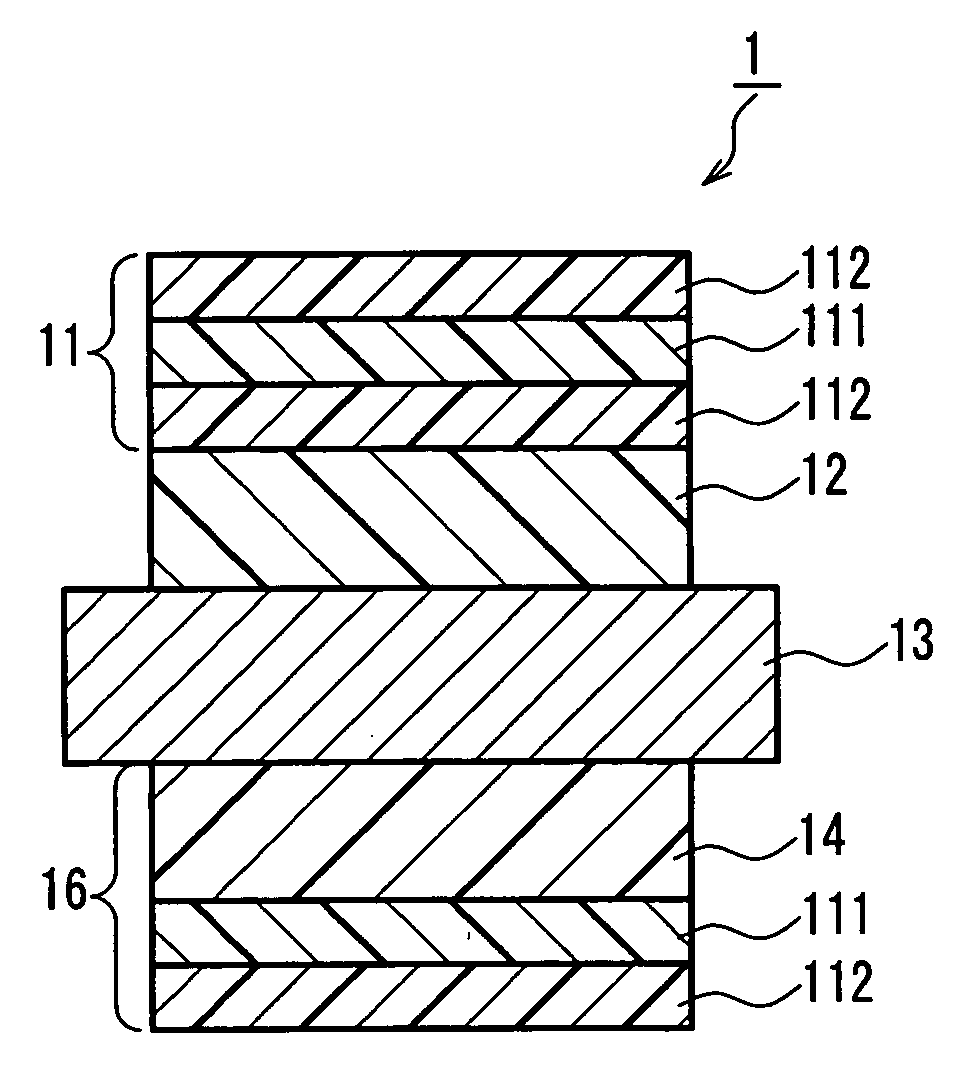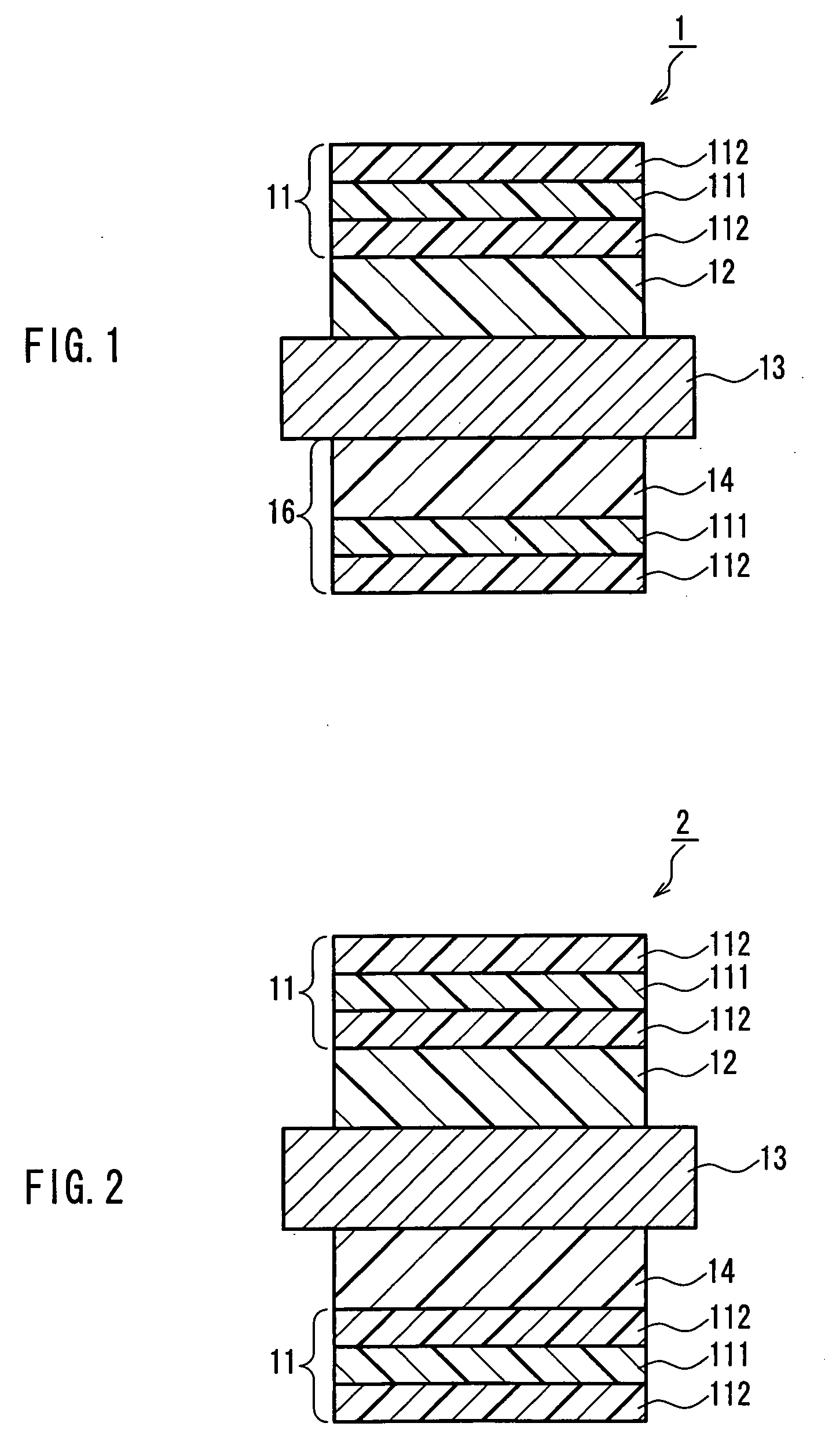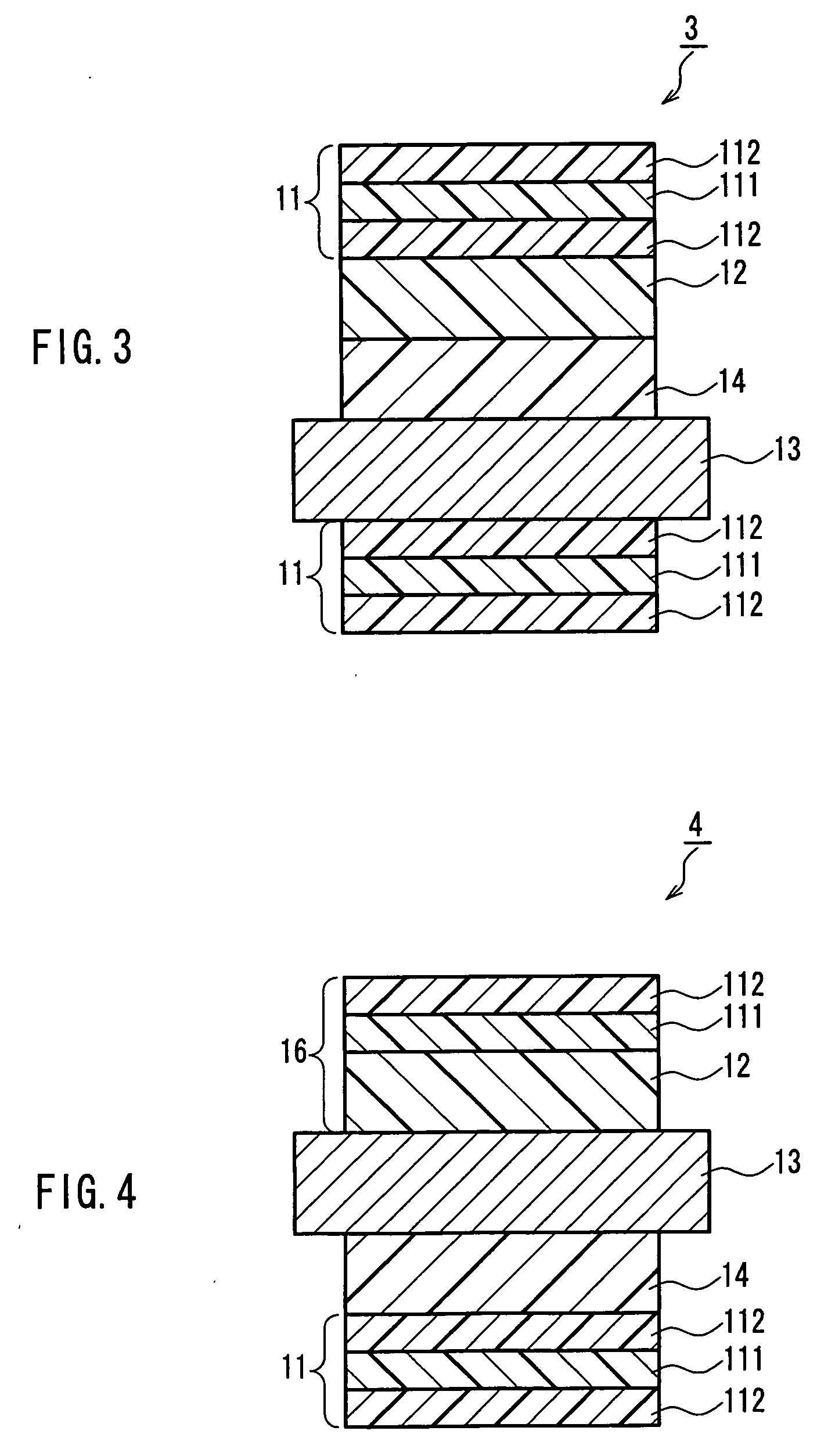Liquid crystal panel and liquid crystal display using the same
a liquid crystal display and liquid crystal panel technology, applied in non-linear optics, instruments, optics, etc., can solve the problems of difficult to achieve perfect black display, light leakage, light leakage, etc., and achieve wide wavelength range, suppress color shifting, and high contrast ratio
- Summary
- Abstract
- Description
- Claims
- Application Information
AI Technical Summary
Benefits of technology
Problems solved by technology
Method used
Image
Examples
example 1
[0154] First, a film of trade name “Pureace WR” manufactured by TEIJIN LIMITED was stretched uniaxially in a longitudinal direction at 230° C., thus obtaining a birefringent layer A (2) with Re=145 nm and nx>ny=nz.
[0155] Using a pressure-sensitive adhesive, the polarizing plate of Comparative example 1 and the birefringent layer A (2) were attached to each other such that an absorption axis of the former and a slow axis of the latter were orthogonal to each other. On the other hand, an elliptical polarizing plate having the birefringent layer B (1) similarly to Comparative example 1 was used. Then, they were attached to the upper and lower surfaces of the liquid crystal cell C of Comparative example 1 via a pressure-sensitive adhesive such that the absorption axes of the two polarizers described above were orthogonal to each other, thus obtaining a liquid crystal panel (II). This liquid crystal panel had a configuration shown in FIG. 1.
example 2
[0156] First, a film of trade name “Pureace WR” manufactured by TEIJIN LIMITED was subjected to fixed-end transverse stretching at 230° C., thus obtaining a birefringent layer A (3) with Re=110 nm, Rth=160 nm and nx>ny>nz.
[0157] Polyimide synthesized by 2,2′-bis(3,4-dicarboxyphenyl)hexafluoropropane) and 2,2′-bis(trifluoromethyl)-4,4′-diaminobiphenyl) TFMB was dissolved in methyl isobutyl ketone and prepared to be 20 wt %. A PET film was coated with this solution and dried at 170° C. for 5 minutes. In this way, a birefringent layer B (3) with d=4.3 μm, Re=0.8 nm, Rth=172 nm, Δnxz=0.04 and nx=ny>nz was obtained.
[0158] The transparent protective layer of Comparative example 1 was attached to one side of the polarizer via an adhesive, while the birefringent layer A (3) was attached to the other side of the polarizer via an adhesive such that a slow axis of the former and an absorption axis of the latter were orthogonal to each other. Furthermore, the birefringent layer B (3) was tran...
example 3
[0160] First, a film of trade name “Pureace WR” manufactured by TEIJIN LIMITED was stretched uniaxially in a longitudinal direction at 230° C., thus obtaining a birefringent layer A (4) with Re=97 nm and nx>ny=nz.
[0161] Polyimide synthesized by 2,2′-bis(3,4-dicarboxyphenyl)hexafluoropropane) and 2,2′-bis(trifluoromethyl)-4,4′-diaminobiphenyl) was dissolved in methyl isobutyl ketone and prepared to be 20 wt %. A TAC film was coated with this solution and dried at 130° C. for 5 minutes. Thereafter, the TAC film alone was subjected to fixed-end transverse stretching at 150° C., thus obtaining a birefringent layer B (4) with d=5.3 μm, Re=25 nm, Rth=235 nm, Δnxz=0.044 and nx>ny>nz. Using a pressure-sensitive adhesive, the polarizing plate of Comparative example 1 and the birefringent layer A (4) were attached to each other such that an absorption axis of the former and a slow axis of the latter were orthogonal to each other, and the other polarizing plate and the birefringent layer B (4...
PUM
| Property | Measurement | Unit |
|---|---|---|
| thickness | aaaaa | aaaaa |
| incident angle | aaaaa | aaaaa |
| incident angle | aaaaa | aaaaa |
Abstract
Description
Claims
Application Information
 Login to View More
Login to View More - R&D
- Intellectual Property
- Life Sciences
- Materials
- Tech Scout
- Unparalleled Data Quality
- Higher Quality Content
- 60% Fewer Hallucinations
Browse by: Latest US Patents, China's latest patents, Technical Efficacy Thesaurus, Application Domain, Technology Topic, Popular Technical Reports.
© 2025 PatSnap. All rights reserved.Legal|Privacy policy|Modern Slavery Act Transparency Statement|Sitemap|About US| Contact US: help@patsnap.com



